Second Look: Nokia Lumia 2520 Windows Tablet
It isn't the best known tablet, but for those who need to get actual work done, Nokia's RT slate is worth considering.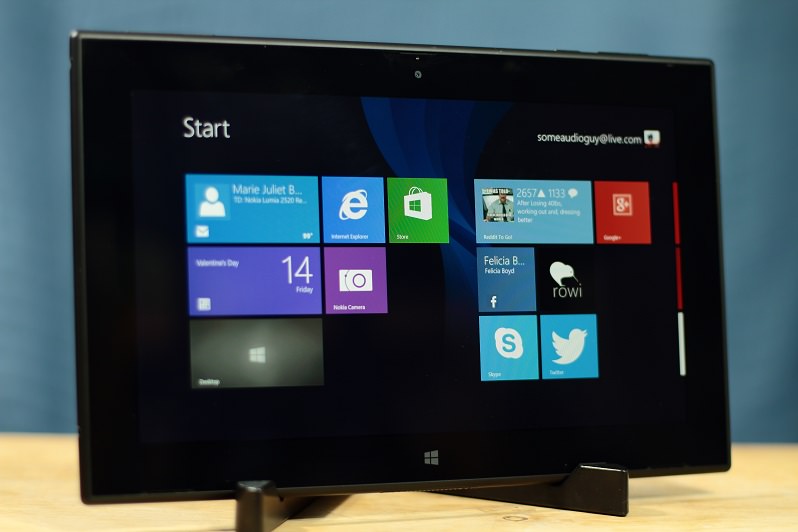 JC Bagnell
JC Bagnell
JC Bagnell
We’re a couple of years into the “Post-PC” revolution. Led by the iPad, and followed by a bevvy of Android-powered competitors, tablets have taken a significant chunk out of computer sales. It seems many consumers are looking to these companion screens for their casual browsing, media and social networking needs. This is troubling news for Microsoft.
Even though the company has pushed the idea of tablet computing since Bill Gates was CEO, Microsoft was essentially left without a dog to race when consumers finally started warming to slates and touchscreens. Apple’s iOS and Google’s Android operating systems proved flexible in making the transition from phones to larger screens. At that same time, Microsoft was just taking the wraps off of its updated Windows Phone mobile operating system, so it did something drastic. It pushed an entirely new user interface, one focused on touch, onto its Windows PC partners and customers.
The showcase devices for Microsoft’s new strategy were the Surface RT and the Surface Pro. Pro was a full-fledged computer, as powerful as a MacBook Air, in a form factor slightly larger than an iPad. RT was a different beast. Instead of traditional laptop guts, it used the same low-power internals as the rest of the tablet market. The trade-off was its inability to run legacy Windows software, meaning customers could load only those apps found in the new (and somewhat empty) Windows App Store.
RT was positioned as a stopgap measure to ensure Windows had some presence in the consumer tablet and hybrid market, and it completely failed to capture any confidence with hardware partners like Lenovo and Asus. One reason may be that Microsoft launched its own Surface tablets and thus entered direct competition with its licensees.
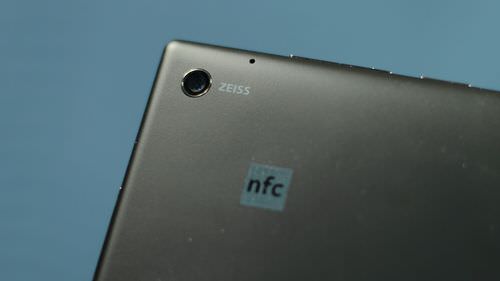 Fast forward a year, and Microsoft is set to absorb Nokia’s devices and services division as part of a bid to reinvent itself. One of the final devices to be released by an independent Nokia is the Lumia 2520, a Windows RT tablet. The Lumia 2520 is an interesting example of a phone maker attempting to transition its design language to a larger device, a device with different usage and ergonomic considerations. It’s a transition many companies have fumbled, and one that might inform the future of Microsoft.
Fast forward a year, and Microsoft is set to absorb Nokia’s devices and services division as part of a bid to reinvent itself. One of the final devices to be released by an independent Nokia is the Lumia 2520, a Windows RT tablet. The Lumia 2520 is an interesting example of a phone maker attempting to transition its design language to a larger device, a device with different usage and ergonomic considerations. It’s a transition many companies have fumbled, and one that might inform the future of Microsoft.
Build and Design
Of late, Nokia has been championing a molded polycarbonate for several of its phones. It’s a process that results in a very attractive plastic unibody, with subtle curves and nearly zero seams. It also comes with the benefit of making scratches and abrasions more difficult to spot. The body of the phone is molded out of colored plastic — it’s not painted — so scratching the surface reveals only more of the same color. The 2520 is built on this process, available in glossy red and white or matte black and cyan. It’s refreshing to see color options instead of black, white and some derivative of “gun metal.” I have been test driving a black 2520, but I absolutely love Nokia’s cyan.
The polycarb construction allows for beautiful organic shapes. The edges on the 2520 taper toward the corners, which tricks the hands into thinking they’re holding a thinner tablet than they actually are. No small feat. The Lumia is lighter than the Surface 2, Microsoft’s latest in-house tablet, but it’s still noticeably heavier than the Samsung Galaxy Note 10.1 2014 and the new iPad Air. It’s very easy to hold on to as far as 10-inch tablets are concerned. Plus, the satiny finish on the matte Lumia is nicer than most of the other plastic (and usually glossy) tablets in this category.
The 2520’s internals are cutting edge. A 10.1-inch screen with a 1080p resolution is powered by Qualcomm’s Snapdragon 800 series chipset, which also includes LTE for high speed data. Different models are built to support AT&T and Verizon’s 4G networks (we’re reviewing AT&T’s variant). You’ll find 2GB of RAM for powering apps and 32GB of storage, with the ability to pop in a MicroSD card if you need more room for media. A 6.7MP rear camera with Zeiss optics and 1.2MP front camera help you capture moments and jump into Skype calls. The rest of the list is what you would expect from a premier device: Bluetooth 4, NFC, front-facing stereo speakers, Micro USB 3 accessory port and Micro HDMI.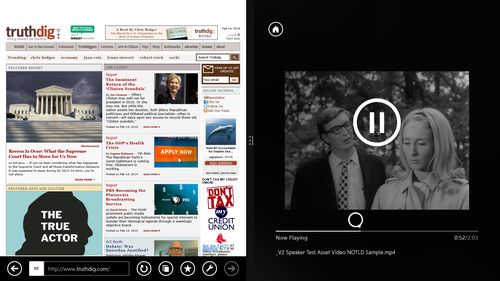 The Screen
The Screen
Nokia provides us a high quality LCD, but it’s not without compromises. The resolution is 1080p, which looks decently crisp, but is lower resolution than the iPad or newer Android fare. It is, however, one of the brightest screens on the market at 650 nits to the iPad Air’s 530, making it easier to read outdoors. Although colors are nicely saturated, I find the screen temperature to be a touch warm, with whites having a slightly yellowish tint. When viewed on its own, it’s a pleasant experience, and definitely built to leave the comfort of your living room. Its faults are really apparent only when placed directly next to competitor’s screens.
Cameras
Although one is likely to be mocked for using a tablet camera in public, especially at concerts and sporting events, Nokia has seen fit to deliver some of the best cameras I’ve used on a tablet. Continuing its tradition of outfitting phones with fantastically high end optics, the 2520 will challenge just about any other tablet for photo and video supremacy. The front camera is decently wide angled, making video calls a little more comfortable. I’m sure we’ve all had that experience of looking up someone’s nose, because they can’t hold their phone far enough away. The wider angle lens means not having to hold the device out at arm’s length for decent framing. 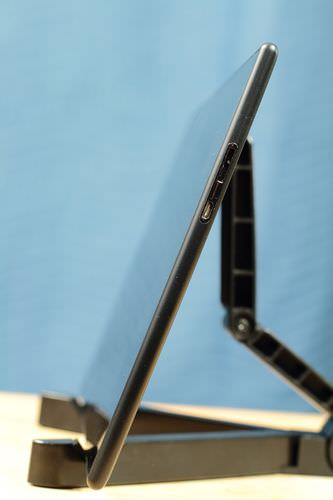
It should be mentioned that Nokia does not use the stock Windows camera app. Nokia’s custom software provides greater control over settings such as exposure and ISO, but even the full auto mode results in better output than the stock camera experience.
Speakers
I normally wouldn’t dedicate a separate section to audio, but the 2520 joins a depressingly small list of devices that realize that pointing the speakers at your face is preferable to pointing them out the sides or rear of a device. Subtly incorporated into the front bezel under the screen, they sound louder and clearer than many competitors simply because they’re pointed in the right direction.
Nokia Software
The biggest advantage to owning a Nokia Windows Phone is the wealth of custom apps and services Nokia provides the platform. This remains true for the 2520 as well. We’ve already mentioned the camera app, but the Lumia also comes with Nokia’s HERE Maps; a video editing program called Video Director; the Storyteller app, which auto-magically organizes and geolocates the photos and videos you shoot; and the fantastic DreamWorks Dragons Adventure GPS game based on the “How to Train Your Dragon” films.
Battery Life and Network
Using the tablet on Wi-Fi, and staying away from max brightness, it’s easily an all-day slate. Running through six hours of video took a 40 percent chunk off the battery. It performs just slightly behind the Surface 2 and the iPad Air, though each of those tablets have far dimmer screens. It handily outpaced all of the Android tablets I’ve tested.
In fact, our 2520 was able to outlast Nokia’s claims of 8 to 10 hours of run time. This will be reduced firing up LTE and running the screen brighter, but thanks to the Qualcomm chipset and some Nokia voodoo, the Lumia can quick charge from 0 percent to 80 percent in about an hour.
AT&T in my area has improved radically recently, now delivering solid LTE most places I go. You quickly take data connectivity for granted on this companion screen. You stop playing that “waiting for Wi-Fi” game. It’s an important aspect in making the Lumia feel a bit more mobile than my Surface or Nexus tablets, which mostly stay at home now.
In Use
It won’t replace a proper laptop, but it gets close. You’re essentially running Windows 8 minus the desktop and legacy software support. Judged against the rest of the tablet market, it offers up formidable multitasking and file management capabilities. Take something as simple as split-screening — running two apps at the same time. It’s a trick the iPad has yet to pick up, and while some Samsungs can replicate it, none do so with the ease of Windows 8. It’s quite nice in practice, watching Netflix, getting an e-mail or Facebook alert, and responding with zero interruption to playback.
It also doesn’t hurt that you’ll get a full version of Office Student and Home, which normally retails for $140. This isn’t a “mobile” or hamstrung version of Office. It’s the real deal, and you’re able to combine that with Microsoft’s OneDrive cloud storage for collaboration and backups. Pairing the Lumia up with a Bluetooth keyboard, or the Nokia Power Keyboard, makes it a respectable productivity tool compared with iOS and Android. I was easily able to write this whole review and edit the included photos on the 2520, and it’s a helpful office companion if you live your life out of spreadsheets, as my wife does.Windows 8, even in RT flavor, also has fantastic support for USB peripherals. Using a micro USB adapter, you can pop in a USB 3 flash drive for easy file transfer. Still one of my biggest gripes about iOS is its inability to let you control what lives on your device and where it should go. You can even plug a Windows or Android phone into the Lumia, and have it show up as a flash drive to move files, music, pics, and videos back and forth. The 2520 also recognizes audio interfaces capable of driving professional grade microphones and cameras using standard USB drivers.
Pricing, Competition and the Wrap-Up
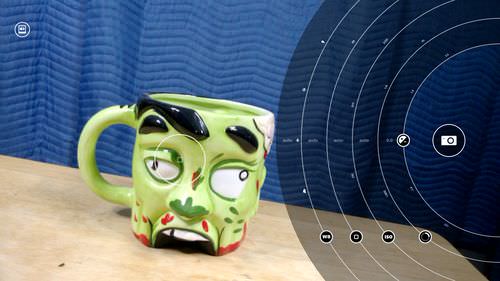
At $499, this is a premium tablet, and that pricing feels appropriate. Positioned against the iPad Air, it’s heavier, has a lower resolution screen and can’t quite match the iPad’s battery life, but for the same price as the 16GB Wi-Fi Air, the Nokia will come with twice as much storage and 4G LTE on AT&T or Verizon. Factor in USB 3, HDMI video output, a MicroSD card slot and a solid camera, and there is a case to be made for the Lumia. It won’t have the wealth of apps iOS or Android users have access to, but we know that Microsoft will be unifying the app platform for Windows Phone and Windows 8 soon, so it’s set to improve.
The only other Windows RT product to compare it against is Microsoft’s own Surface 2. On first glance, the Surface 2 feels nicer thanks to its magnesium shell and kickstand. I also really enjoy the full sized USB 3 accessory port on the Surface instead of the Micro USB 3 accessory port on the 2520. For only $50 more than the Surface however, the Lumia packs better cameras, a brighter screen, LTE connectivity, custom Nokia apps, louder speakers, and NFC for tap and pair functionality. Having used both devices for a couple of months, I’m far more likely to take the 2520 out into the field, while the Surface 2 has become yet another glowing rectangle residing in my living room.
Ironically, Windows RT devices like this will probably face greater competition from newer Windows 8 tablet hybrids. Dell, Lenovo and Asus have all released tablets that run a full version of Windows, supporting legacy software, and arriving in a variety of form factors. Some of the 7- and 8-inch tablets undercut this Nokia by more than $100, offering up a more netbook-like experience.
Nokia’s experiment is largely successful. Judged against laptops, Windows RT feels claustrophobic. It’s so similar to regular Windows, you’ll want to be able to load third party software, and you won’t be able to. Judged against other tablets, however, it can be a more functional companion than iOS if you need better file and document support, and it handles many peripherals better than Android can.
It’s funny. More than 90 percent of the PC market still sides with Microsoft, but walking around with a Windows tablet makes a counterculture statement in a world of iPads and Galaxies. It never fails to become a conversation piece in public.
I wasn’t expecting to like Windows RT, but using it for a couple of months, it’s won me over. I don’t reach for my iPad or my Nexus as often as I used to, and when I want to get some writing done away from home, I throw the 2520 in my bag instead of my laptop. I only wish Nokia’s future weren’t so vague, as we now wait to see what will happen to this longtime Finnish favorite once it’s devoured by Microsoft.
Waiting is the hardest part.
Your support matters…Independent journalism is under threat and overshadowed by heavily funded mainstream media.
You can help level the playing field. Become a member.
Your tax-deductible contribution keeps us digging beneath the headlines to give you thought-provoking, investigative reporting and analysis that unearths what's really happening- without compromise.
Give today to support our courageous, independent journalists.









You need to be a supporter to comment.
There are currently no responses to this article.
Be the first to respond.